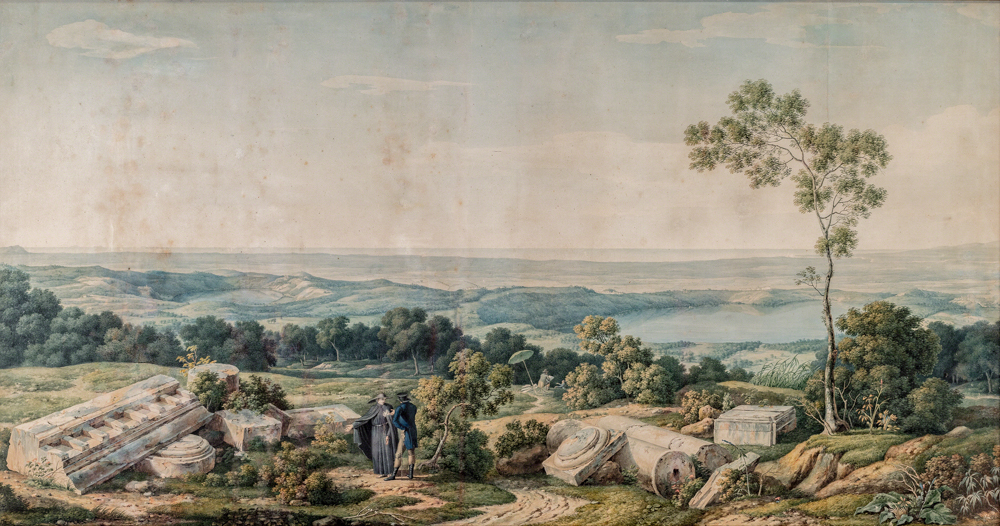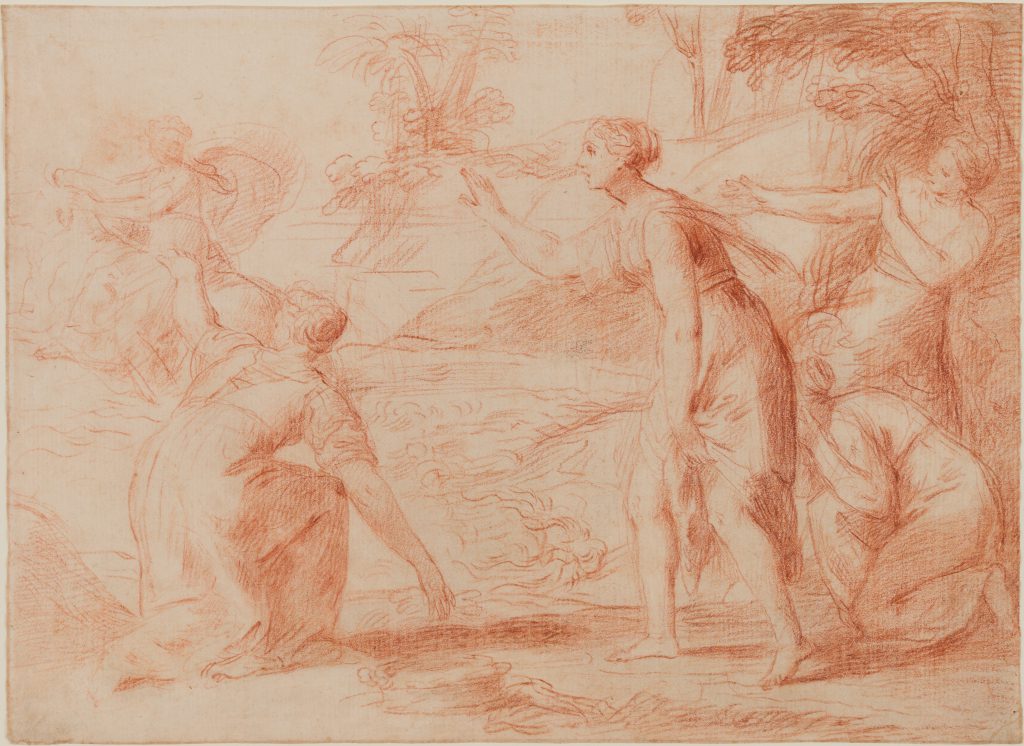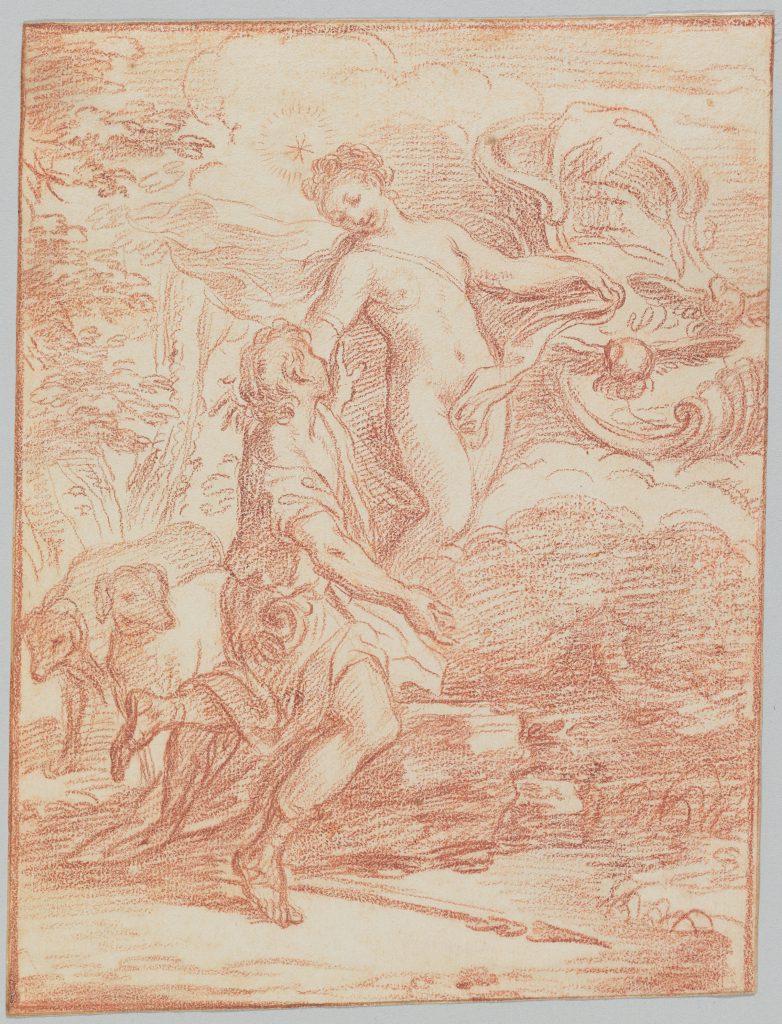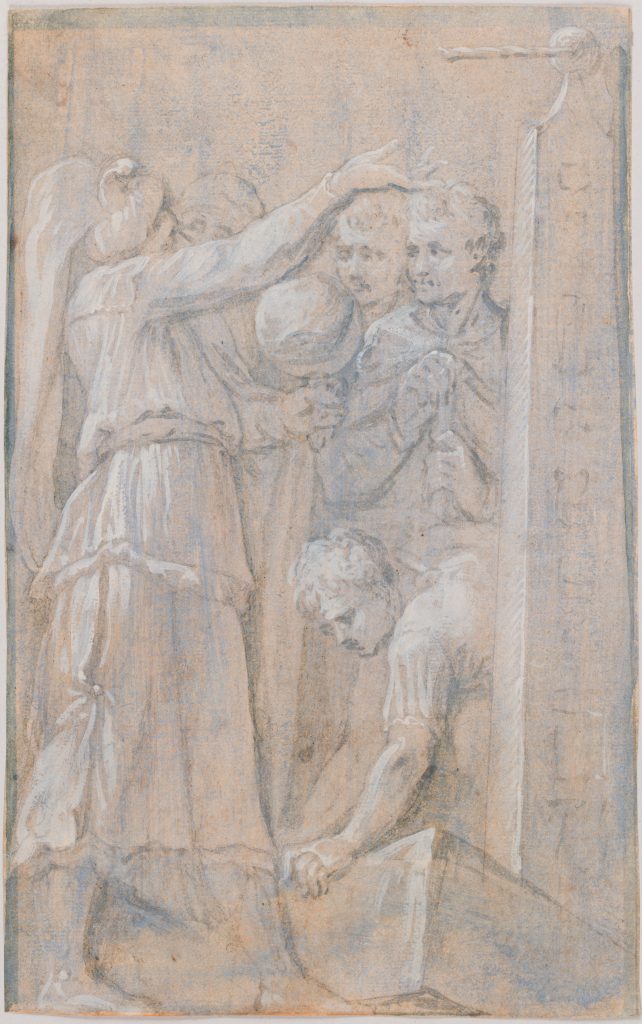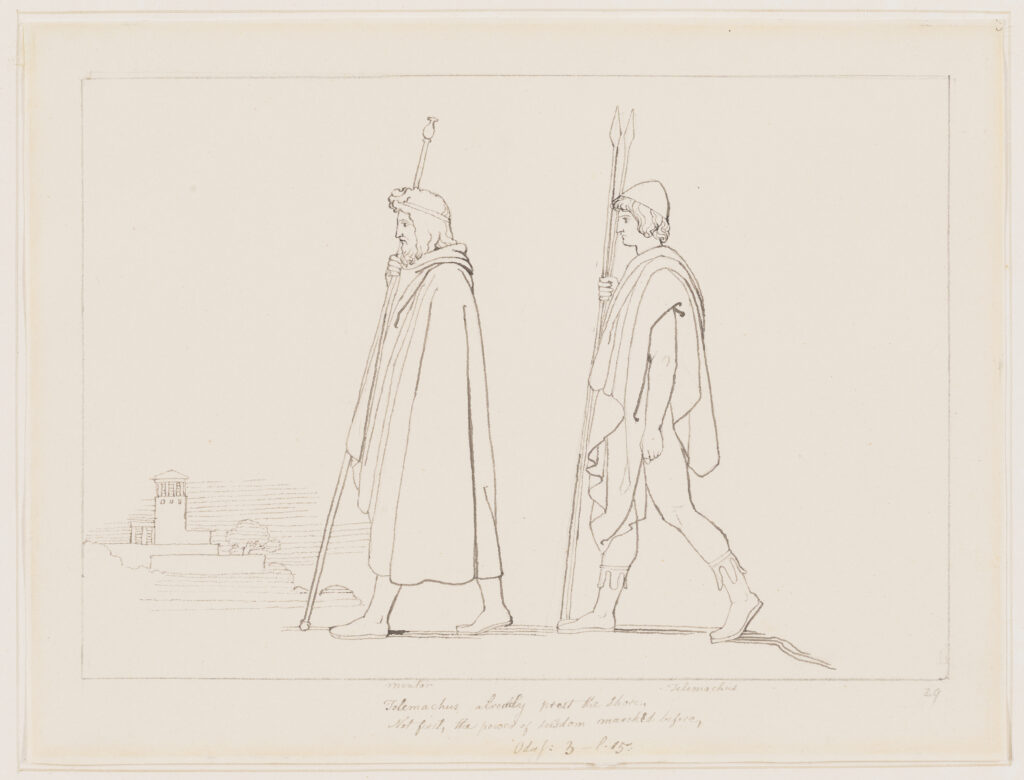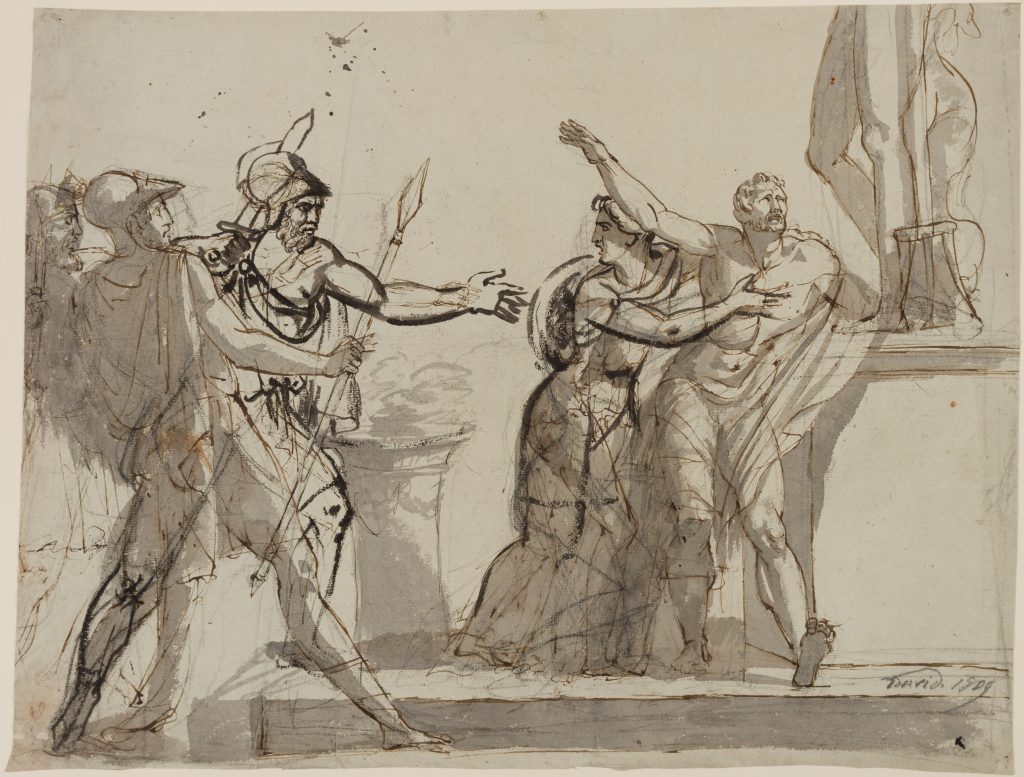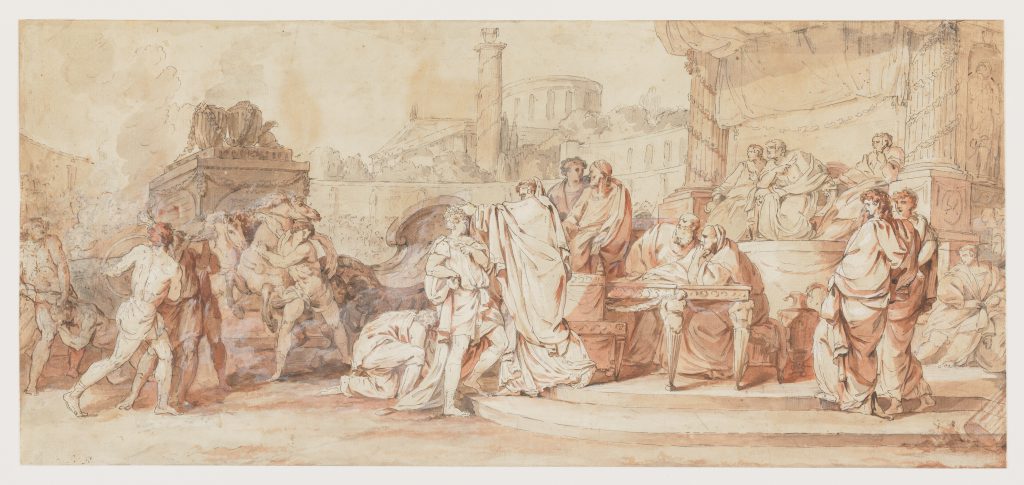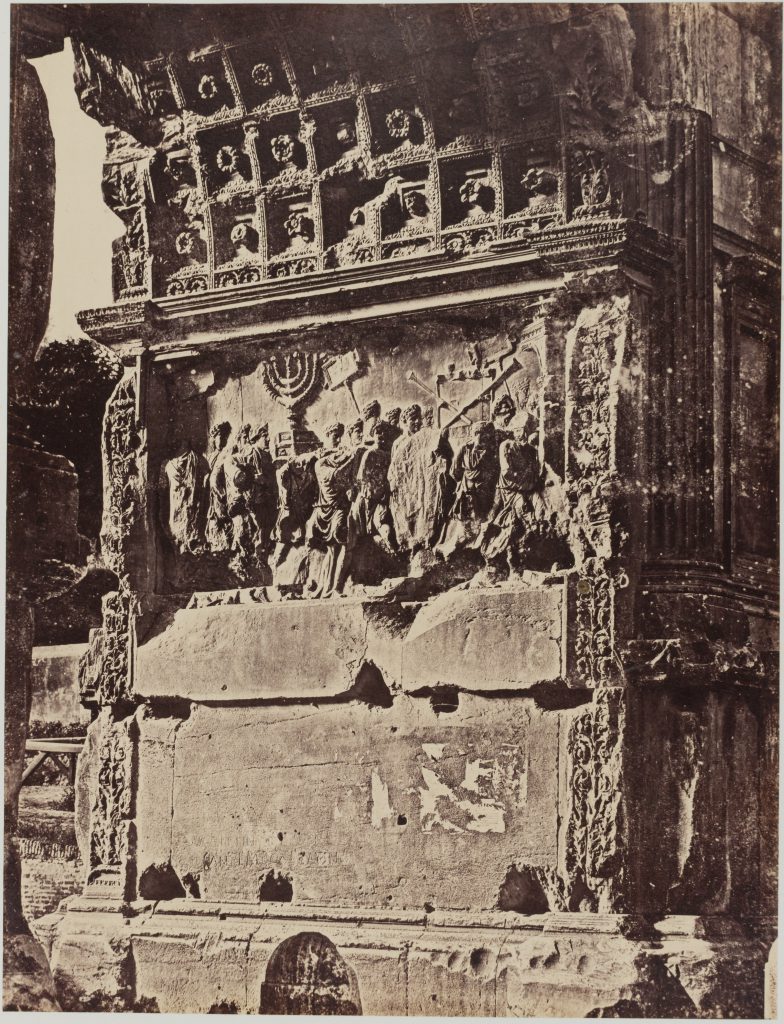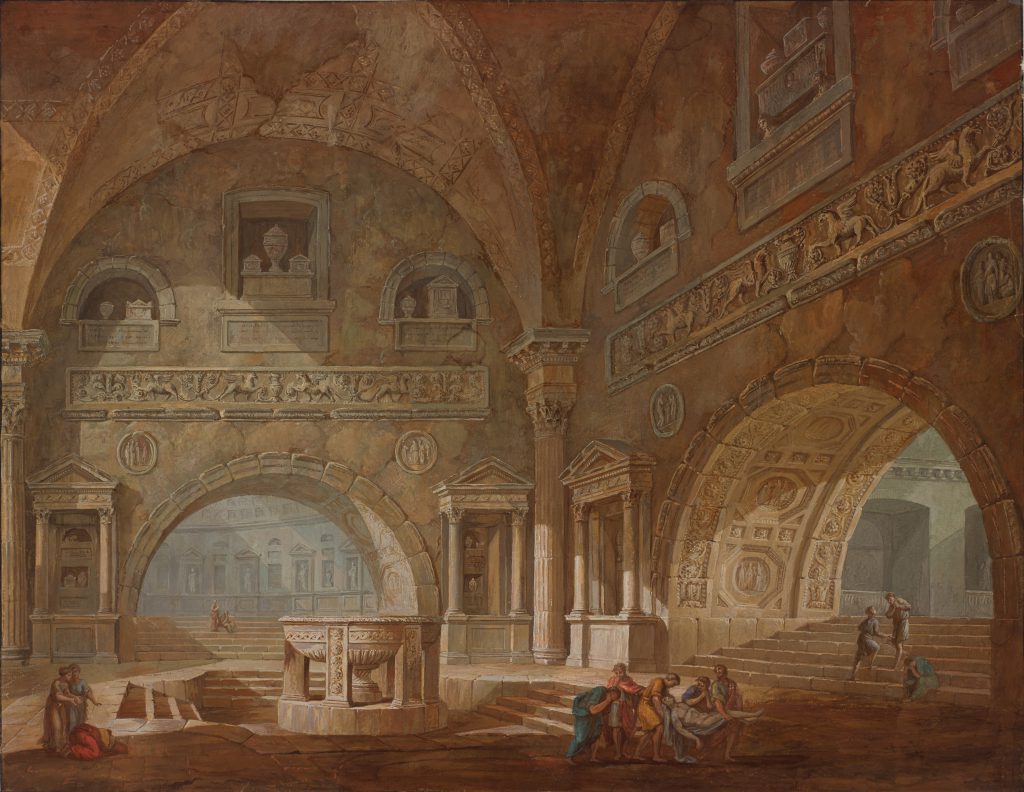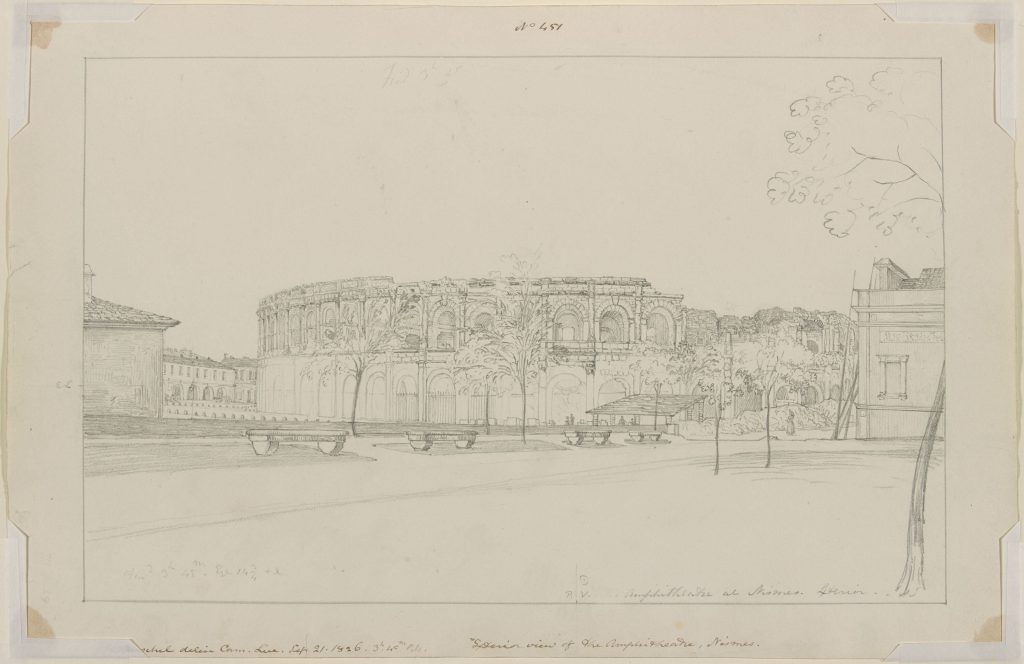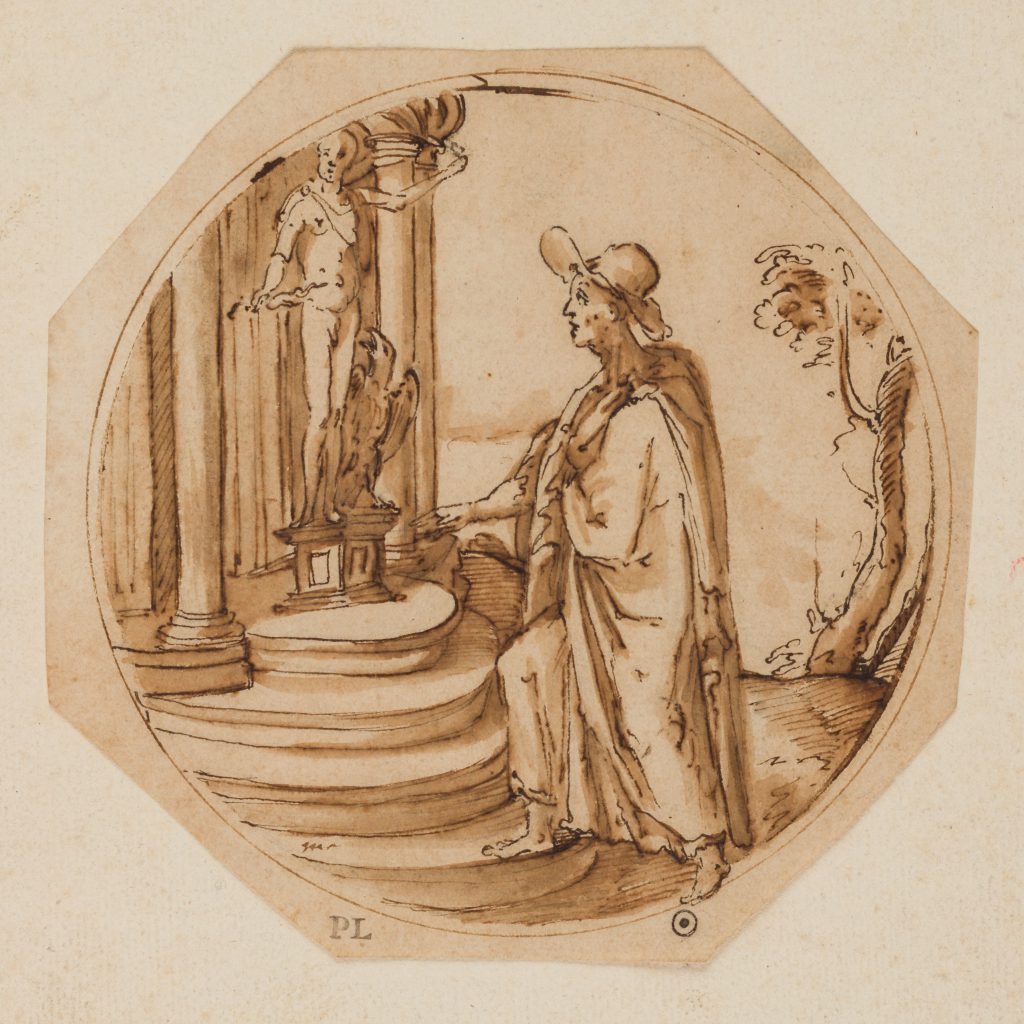View from the Summit of Monte Cavo. Design for Plate I of Grecian Remains in Italy.
McGuigan Collection
This watercolor, a panoramic view from Monte Cavo with Roman ruins in the foreground, was for Middleton an important vista in relation to antiquity, one that “embraces the whole scene of the Aeneid.” For publication, the watercolor was transformed into one of the most impressive illustrations in the volume: two double-page aquatint plates with each of the landscape and architectural features carefully labeled. The precisely rendered ruins of the Temple of Jupiter Latialis, the figures added for scale, even the artist and his companion engaged in plein air sketching of the view (possibly Middleton himself) show Middleton at his best. With the aid of a camera obscura, the artist was able to create accurate but also aesthetically pleasing representations of the Roman landscape.
It is all the more surprising then that the Roman ruins pictured here were a fiction; the archaeological remains of the site had been removed at the end of the eighteenth century to build a nearby convent. While the artist was knowledgeable about classical history and the latest archaeological scholarship, writing a scholarly account of the ancient history of central Italy to accompany his watercolors, it was the illustrations in Grecian Remains that were his most significant contribution and, as he put it, “the principle object of the text.”
